Biography ESL Lesson Plan [Free PDF]
Table of Contents

Introduction
The Biography ESL Lesson Plan is designed to introduce students to the concept of biographies and help them develop their language skills through the exploration of real-life stories. This lesson plan aims to engage students in learning about different people’s lives, while also expanding their vocabulary, reading, and writing abilities. By delving into the lives of various individuals, students can gain cultural insights and improve their language proficiency. This topic provides a rich opportunity for language practice and cultural understanding, making it an essential part of an ESL curriculum.
Vocabulary Building
Contextual Usage
Esl warm-up activity.
To kick off the Biography ESL Lesson Plan, start with an engaging activity called “Guess the Biography.” Prepare a set of flashcards, each featuring a famous person or historical figure. Without revealing the names, describe each person using adjectives and key events from their lives. Encourage students to guess the identity of each individual based on the clues provided. This activity not only captures students’ attention but also introduces them to the concept of biographies and the vocabulary associated with notable figures.
Main ESL Lesson Activities
Vocabulary activity: who am i, listening exercise: biography podcast.
Provide students with a short podcast episode featuring a biography of a well-known individual. After listening, facilitate a group discussion where students share what they learned and express their opinions about the person’s life. This exercise enhances listening skills and promotes collaborative learning.
Roleplay: Interview with a Historical Figure
Esl homework assignment.
For homework, students will choose a historical figure or a person of interest and write a short biography about them. They should include key events, achievements, and the impact the individual had on society. Encourage students to use the vocabulary and concepts learned in class. Additionally, they can prepare a brief presentation to share their biographies with the class in the next session. This assignment reinforces writing skills, research abilities, and public speaking.
Why this topic is great for ESL learning
Enhanced language skills.
Studying biographies provides a rich opportunity for ESL learners to expand their vocabulary, improve reading and writing abilities, and enhance their overall language proficiency.
Cultural Understanding
Real-life relevance, post navigation.

Lesson Plan on Homeostasis [Free PDF]

The Red Badge of Courage ESL Lesson Plan [Free PDF]
Unsupported Browser
Ellii may not function properly in Internet Explorer. We recommend using Google Chrome or Firefox instead.
Ellii may not function properly in older browsers. We recommend updating yours to the latest version for the best experience.
Famous People

- 154 English lessons
- View a Sample Lesson
From inventors to politicians to celebrities and humanitarians, your students will love reading about these famous, legendary, and influential people from across the globe. Each lesson includes a one-page biography, comprehension questions, vocabulary development tasks, and discussion questions.

Sample Lesson
Susan b. anthony.
Go to this sample lesson from Famous People to get a feel for the lessons in this section. A paid subscription to Ellii gives you access to all of our 1,000+ lessons and 3,000+ flashcards.
There are no lessons that meet these criteria.
Other categories you might be interested in:
View more sample lessons, discussions & debates.
- Discussion Starters (Low Int – Adv)
- Mini-Debates (Int – Adv)
- Simple Sentences (Beg – Low Int)
- Basic Grammar Sentences (Beg – Int)
- Grammar Stories (Beg – Int)
- Grammar Practice Worksheets (Beg – Adv)
- True Grammar Stories (Beg – Low Int)
Young Learners & Adult Literacy
- English Basics (Pre Beg – Low Int)
- Word Bank (Pre Beg – Beg)
- Word Bank Readers (Beg – Low Int)
- Picture Stories (Pre Beg – Beg)
- Story Prompts (Beg – Int)
- Discovery (Low Int – Int)
- Phonics (Pre Beg – Low Int)
- Phonics Stories (Beg – Int)
- Pronunciation (Beg – Int)
- Super Simple Grammar (Pre Beg – Beg)
- Fun Grammar Lessons (Beg – High Int)
Life Skills
- Super Simple Questions (Pre Beg – Beg)
- Functional English (Beg – Int)
- Everyday Dialogues (Beg – High Int)
- Living in English (Low Int – High Int)
- Health Matters (Int – Adv)
- Role-Plays (Int – Adv)
- Real-World Reading (Beg – Int)
- Listening in English (Beg – Adv)
Academic & Workplace English
- Writing in English (Beg – Adv)
- Reading in English (Low Int – Adv)
- Business Matters (Int – Adv)
- Pre-Employment in Canada (Low Int – Int)
- Academic Vocabulary (Low Int – Adv)
- English at Work (Int – Adv)
- Functional Business (Int – High Int)
Reading & Discovery
- Famous People (Beg – Adv)
- Famous Places (Int – Adv)
- Famous Things (Int – High Int)
- American Presidents (Int – Adv)
- Easy Readers (Low Int – Int)
- Sports & Leisure (Int – High Int)
- That's News to Me (Low Int – Adv)
- Easy News Stories (Beg – Low Int)
- Historic Events (Low Int – Adv)
- Group Projects (Int – Adv)
Holidays & Travel
- Holidays & Events (Beg – Adv)
- Travel English (Int)
English Storylines
- Everyday Idioms 1 (Int)
- Everyday Idioms 2 (Int – Adv)
- Everyday Idioms 3 (Int)
- Detective Series 1 (Int – Adv)
- Detective Series 2 (Int – Adv)
Buy a subscription to Ellii to access all of our lessons and flashcards for professional English teachers.
Rely on Ellii for wonderful teaching resources that help you teach a better class. Our ready-made materials are designed for teaching English to teens and adults anywhere in the world. We also have kid-friendly lessons for young learners and middle schoolers as well as lessons for literacy classrooms. We add new materials every month to always keep your classroom content fresh and current.
88,977 English ESL worksheets pdf & doc
Jump to navigation

- Actions/Daily Routines
- Body/Health
- Colors/Shapes
- Holidays/Celebrations
- Science/Technology
- Sports/Hobbies
- Transportation
- Confusing Words
- Homonyms/Homophones
- Spelling/Word Games
- Career/Business
- Economy/Wealth
- Education/School Life
- Entertainment
- Environment/Nature
- Health/Medicine
- Relationships
- Social Issues/Politics
- Comparatives
- Conditionals
- Conjunctions/Connectors
- Contractions
- Gerunds/Infinitives
- Quantifiers
- Participles
- Parts of Speech
- Passive Voice
- Prefixes and Suffixes
- Prepositions
- Pronouns/Possession
- Punctuation
- Questions/Short Answers
- Relative/Adjective Clause
- Reported Speech
- Sentence Structure
- Phrasal Verbs
- Irregular verbs
- Simple Present
- Present Continuous
- Present Perfect
- Present Perfect Continuous
- Simple Past
- Past Continuous
- Past Perfect
- Past Perfect Continuous
- Simple Future
- Future Continuous
- Future Perfect
- Future Perfect Continuous
- Dictionaries
- Exams/Certificates
- Other Directories
- Study Methods
- Business English
- Idioms/Slang
Biographies and Profiles ESL/EFL Lesson Plans
A great directory for teachers and educators looking to use biographies in their lessons. Each Lesson plan includes a transcript and optional downloads (Word Doc, PDF, MP3 Listening and an Online Exercise). There are over 10 different exercises all based on the transcript, as well as group extension projects and homework ideas.
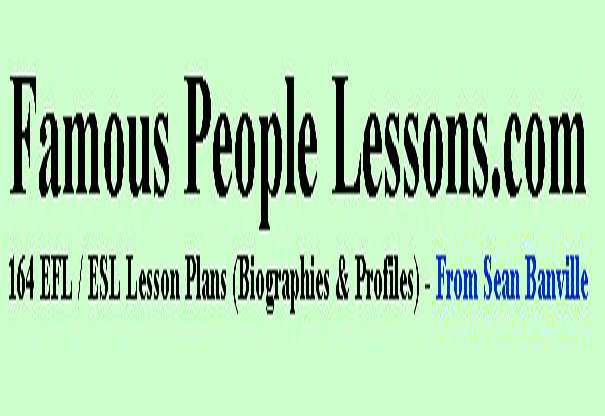
Biographies: Creating Timelines of a Life
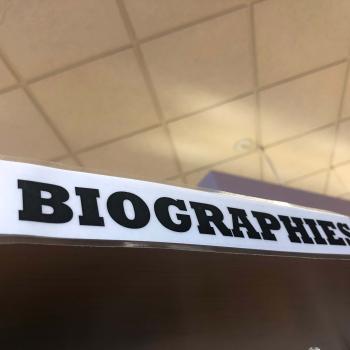
- Resources & Preparation
- Instructional Plan
- Related Resources
Studying the lives of others and reading biographies is of interest and value to young learners. In this lesson, students explore multiple sources to create a timeline about the life of a person of their choosing. The experience requires students to work together and to research and resolve potentially conflicting pieces of information about the life they research. Extension activities include developing essays from the original research.
Featured Resources
Interactive Timeline : Use this online tool to help students record events in a selected person's life.
From Theory to Practice
In order to fill the void in her students' knowledge of people with "admirable qualities," Michele Keating introduced them to the genre of biography. She states: "My objective was to expose students to the many people, past and present, who are worthy of admiration and to explore together the dedication, creativity, and achievements of these people." (66) In the end, the biographical study "broadened their view of people worth admiring." (69)
Biographies can expose our students to a whole world of people who can inspire and motivate them. In this lesson students select their own person of interest and consult multiple sources to get to know them.
This lesson was originally developed with Maggie Chase and Bess Berghoff, Indiana University 1990.
Further Reading
Common Core Standards
This resource has been aligned to the Common Core State Standards for states in which they have been adopted. If a state does not appear in the drop-down, CCSS alignments are forthcoming.
State Standards
This lesson has been aligned to standards in the following states. If a state does not appear in the drop-down, standard alignments are not currently available for that state.
NCTE/IRA National Standards for the English Language Arts
- 1. Students read a wide range of print and nonprint texts to build an understanding of texts, of themselves, and of the cultures of the United States and the world; to acquire new information; to respond to the needs and demands of society and the workplace; and for personal fulfillment. Among these texts are fiction and nonfiction, classic and contemporary works.
- 3. Students apply a wide range of strategies to comprehend, interpret, evaluate, and appreciate texts. They draw on their prior experience, their interactions with other readers and writers, their knowledge of word meaning and of other texts, their word identification strategies, and their understanding of textual features (e.g., sound-letter correspondence, sentence structure, context, graphics).
- 5. Students employ a wide range of strategies as they write and use different writing process elements appropriately to communicate with different audiences for a variety of purposes.
- 7. Students conduct research on issues and interests by generating ideas and questions, and by posing problems. They gather, evaluate, and synthesize data from a variety of sources (e.g., print and nonprint texts, artifacts, people) to communicate their discoveries in ways that suit their purpose and audience.
Materials and Technology
- Biography text sets, created using the provided Websites
- Information on your personality of choice
- Strips of paper for timeline note taking (half a sheet of legal paper, 4.25"x14"), pens or pencils) optional instead of online Interactive Timeline)
- Internet access
Biography Selection & Rationale
Preparation
- Review the written lesson and suggested links. Gather sufficient materials to introduce the lesson—ideally 3-4 information resources for up to six personalities, to include 1) biographies written at the 2nd-5th grade level, preferably including numerous pictures and charts, 2) video tapes, and 3) Web resources. Potential personalities include famous presidents [Washington, Lincoln, Kennedy], inventors [Franklin, George Washington Carver, Madame C.J. Walker], scientists [Marie Curie, Edwin Hubble, Samuel Lee Kountz, Jr.], space explorers [Neil Armstrong, Sally Ride, John Glenn], or athletes [Jim Thorpe, Ichiro Suzuki, Lance Armstrong]. This initial selection must often be limited to personalities for whom you can locate multiple resources, but should include a range of ages, gender, cultures, occupations, and historical and modern day figures.
- Review use of the Interactive Timeline .
- Conduct a short inquiry of your own on a personality of interest as a means of introducing the lesson. Amelia Earhart is one personality for whom you are likely to find disparate information and various hypotheses regarding her disappearance. See The Last Flight Website for information and additional Web sources.
Student Objectives
Students will
- negotiate with peers to select persons of interest for their study.
- use a variety of information resources to synthesize, create, and communicate what they've learned on a timeline.
- negotiate with peers to select key events.
- research further to resolve conflicting information.
Session One: Introducing the Lesson
- Share your interest in the chosen personality and your quest for more information about that person. Leaf through a magazine article or book, sharing key events, show short clips from a video, and/or share several pieces of information on a Website.
- Highlight instances when the authors of the resources emphasize different aspects of the personality's life or when you run across conflicting dates or information. Share that resolving such conflicts is always a challenge for researchers, and generate with students an initial list of ways they might resolve conflicting source information.
- Introduce the initial set of resources, and invite groups of students to select and support with rationale two personalities worthy of the group's study among the collected resources, as well as two additional personalities (browsing the Resources section is one source for additional names). Students can make their selections on loose sheets of paper, in a bound notebook, or on the included Biography Selection & Rationale .
- Ask students to work in small groups to make the selections and generate the rationale. If there is time, ask a spokesperson to share how different group members made their selections.
- Create a whole group list of preferred choices, dividing into those for whom resources are already gathered and those that will require a search and gathering of sources.
- Ask students to make an initial choice by adding their initials after the listed name of their choice. Indicate a deadline when resources must be collected for newly generated names—over the weekend is a workable timeframe—and join the students' search for those resources. The personality from the initial set of resources can serve as a "default" choice if resources can't be located, yet note that the quality of the research is enhanced by student commitment to a personality of interest so it can be well worth the effort to help students gather resources.
Session Two: Small Group Research
- Students are seated in groups of 3-5 with sufficient resources so that each student has his or her own text on the same personality (book, magazine article, CD-ROM, Website, video).
- Ask students to browse their texts quietly, mapping the key events on their timeline paper strip. Encourage sufficient flexibility for students to invent their own ways of taking notes on the timeline. Advise that including page numbers, URLs and counter information will aid them in revisiting information if necessary.
- All begin working quietly. Circulate to encourage those who are reading page-by-page to browse key subtitles, charts or photograph annotations. The independent work period should be limited to no more than 30-40 minutes.
- As the small groups begin to finish browsing their texts, encourage them to share the gathered information among themselves. What have they found? What information is new? of interest? a surprise?
- Ask the group to agree on 6-10 key events in the life of their personality. If computer access is limited and the online timeline tool must be shared, create a schedule so each group has the opportunity to enter the key events. Note that entering data and printing out the timeline must be accomplished in one sitting.
Session Three: Debriefing the Initial Research
- Conduct a full group discussion of the groups' work: What went well, what was a challenge? Which texts were helpful? Which were less helpful? How did the group decide on key events? How will they further explore conflicting information?
- Revisit the initial list of strategies to resolve conflicting information. Add strategies as necessary. Try the strategies out on one or two key conflicts as applicable.
- Post the class-generated strategies in the school library for on-going reference.
- Schedule additional small group work time to resolve conflicting information.
- Help teams develop short bibliographies of their resource text set, sharing the protocols for citation of the various sources.
- Create individual online timelines on figures of interest related to another course of study, i.e. world leaders, scientists, women explorers.
- Create autobiographical timelines.
- Recreate paper timelines, using colored pencils or fine tip markers to add illustrations.
- Use timelines as "notes" to write a fuller biography essay. One potential online tool that helps students manage their ideas and writing can be found at The Biography Maker Website .
- Begin another round of biography research, challenging students to research alone or in pairs, using the strategies developed in these introductory lessons.
- Categorize the attributes of the famous people you have studied. See the Images of Greatness Website as one example by a 4th/5th grade class.
Student Assessment / Reflections
- Group conversation
- Calendar Activities
- Student Interactives
- Strategy Guides
Students generate descriptive timelines and can include images in the description.
Add new comment
- Print this resource
Explore Resources by Grade
- Kindergarten K
- Conversation
- Interactive
Tags: advanced , beginner , business , entertainment , intermediate , kids , music , past simple , politics , present perfect simple , present simple , science
In the Biography ESL project, students research the life of a famous person, then write about them and/or present to the class.
This project is normally completed individually, but could be done in pairs with younger students.
Students will need an Internet-connected device to research their famous person. If they can use smartphones or a computer room, this can be done in class. Otherwise, get them to do the research at home for homework.
- Students choose a famous person that interests/inspires them. If necessary, limit this choice to fit the topic, e.g. musicians or scientists. Also, if you wish to practise the present simple and/or present perfect simple, the person should still be alive. Try and make sure you don’t get too many students writing about the same person!
- Students research their famous person and make notes on their life. To avoid the risk of plagiarism, stress that these notes must not be full sentences. With younger or low-level students, you could get them to copy a list (see below), and write the information they find next to it.
- Using only their notes, students write up the research into full sentences as a biography. Optionally, they could also make a computer presentation with pictures, and present it to the class.
- As an extension, you could get students to form small groups and teach each other about their person. Rearrange the groups a few times, then ask students to write/speak about a new person they have heard about too.
Possible required information:
– Name – Age – Date of Birth – Place of Birth – Study (if any) – Job – Where they live – Work (e.g. movies acted in) – Achievements and Awards
Target Language
As mentioned above, you can use the Biography ESL project as part of a topic on a particular field, like music , entertainment , politics or science . For a business English students, you could even get them to profile a businessperson they admire (including related vocabulary).
Alternatively, you could focus on the grammar used for biographies – it’s a great way to practise using a mixture of tenses. At a basic beginner level, students could just write a few facts in the present simple . In most cases though they should also include sentences in the past simple (about life events, previous jobs, study etc.) and the present perfect simple (e.g. multiple accomplishments/award wins). Correct use of the passive for these tenses should also be used where appropriate.
Another option for this project is for students to write a biography of a family member. In this way you could link it in with the topic of family .
You can reuse student-prepared biographies in the activity Biography Scanning .
Got a picture or video of this activity in action? How about snapping one next time you use it? We'd love to showcase your submissions- find out more here .
LEAVE A COMMENT Cancel reply
Warmer of the day.
Tags: beginner , intermediate , kids , reported speech , warmer
The Family Feud ESL game is a version of the popular TV show of the same name (Family Fortunes in the UK), adapted for your English class.
Vocabulary Image Generator
Common tags, follow eslactive.
|
| |



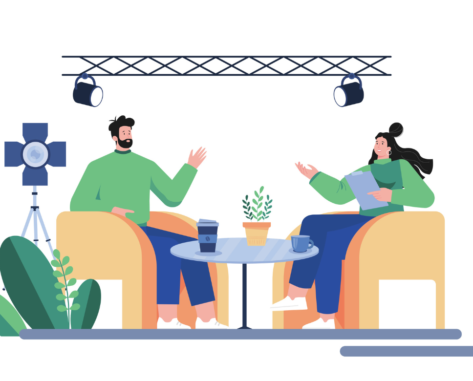




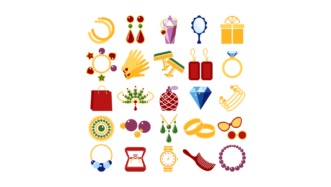
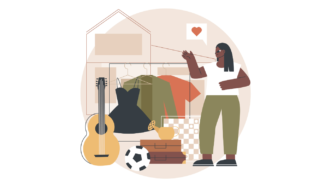

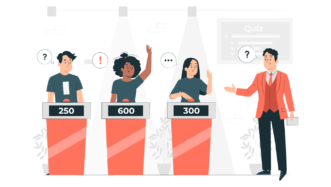








IMAGES
VIDEO
COMMENTS
Famous People Lessons: Ready-to-print handouts (166 so far) for English lessons on the lives of famous people. FREE Word and PDF downloads. ... FREE Word and PDF downloads. Famous People Lessons 167 ESL Lesson Plans Help My Site. Tweet NEW: NAOMI OSAKA YUJA WANG 50 Cent: Rap artist A : Aishwarya Bachchan: Actress Alex Rodriguez: Baseball player ...
Pre-intermediate (A2-B1) In this audio-based lesson, students will learn about the life and many achievements of Leonardo da Vinci. The lesson focuses on vocabulary, listening comprehension, word families and speaking. There is also an optional extension activity which focuses on art equipment and materials.
The Biography ESL Lesson Plan is designed to introduce students to the concept of biographies and help them develop their language skills through the exploration of real-life stories. This lesson plan aims to engage students in learning about different people's lives, while also expanding their vocabulary, reading, and writing abilities. ...
We also have kid-friendly lessons for young learners and middle schoolers as well as lessons for literacy classrooms. We add new materials every month to always keep your classroom content fresh and current. Pricing. Over 150 ready-to-teach ESL lessons on famous and influential people. Featuring short bios, comprehension, vocabulary, and ...
A selection of English ESL biography printables. ... Worksheets. Powerpoints. Video Lessons. Search. Filters. Browse Topics: Grammar Topics General Topics. 255 Biography English ESL worksheets pdf & doc ... Biography. In this subject you . 1572 uses. EnglishSoas2022. Biography. writing a biography . 521 uses. emma0947. Biographies. For French ...
Grammar. This lesson plan focuses on basic English questions. Students watch an interview with two famous actors and discuss different questions. Students also do a role play where they interview each other. Unlimited Plan Show. C1 / Advanced | C2 / Proficiency. Standard Lesson 75 min. Add to saved lessons.
60 min. Charles Dickens. Intermediate (B1-B2) This audio-aided lesson tells the life story of the famous 19th-century writer Charles Dickens, who had a huge influence on how we think about Christmas. The lesson focuses on vocabulary, listening comprehension, a short review of the passive and speaking.
Famous people. It's a worksheet to. 739 uses. A selection of English ESL famous people printables.
Biographies and Profiles ESL/EFL Lesson Plans. A great directory for teachers and educators looking to use biographies in their lessons. Each Lesson plan includes a transcript and optional downloads (Word Doc, PDF, MP3 Listening and an Online Exercise). There are over 10 different exercises all based on the transcript, as well as group ...
ARTS AND MEDIA LITERARY LIVESLevel: Intermediate - Upper intermediate (B1-B2) (The first section, Biographies, can be used with pre-intermediate/A2 st. dents as a 60-minute lesson.)Age: Teenagers Time: This lesson can be divided up in various ways to suit the tim. you have with your students. Below are four time options that you can choose ...
This biography lends itself well to 'show and tell' sessions when learners can talk to the class about their own experiences. In this section too, learners may include any plans they have for taking an English exam, visiting an English-speaking country, or having English-speaking visitors at home. Age: Older primary The type of things which learners can include in their biography are:
Studying the lives of others and reading biographies is of interest and value to young learners. In this lesson, students explore multiple sources to create a timeline about the life of a person of their choosing. The experience requires students to work together and to research and resolve potentially conflicting pieces of information about ...
Target Language. As mentioned above, you can use the Biography ESL project as part of a topic on a particular field, like music, entertainment, politics or science. For a business English students, you could even get them to profile a businessperson they admire (including related vocabulary). Alternatively, you could focus on the grammar used ...
Welcome to ESL Printables, the website where English Language teachers exchange resources: worksheets, lesson plans, activities, etc. Our collection is growing every day with the help of many teachers. If you want to download you have to send your own contributions. Biographies worksheets
In this ESL lesson plan for adults and teens, students watch a short biography video and do a listening exercise about Martin Luther King Jr. It includes discussion questions and other speaking activities about Martin Luther King Jr., civil rights, and racial discrimination in the USA. Students also learn some important vocabulary terms and phrases from the video. The post-viewing section ...
HOMEWORK/REVISION. This lesson plan also includes an additional grammar task for students to practise defining and non-defining relative clauses further. The task is available in the teacher's version of the worksheet. You can print it, and hand it out to your students. It's also included in the e-lesson plan if you teach online.
aloud a biography featured in a picture book.Put a collection of. iographies in front of each group of students. Encourage students to look through the books and ask them to discuss in their groups how the books are like othe. non-fiction books and how they are diff. rent. Afterwards, encourage students to share. Record the in.
ESL lessons and quizzes grouped by category: Biographies. ESL Video offers free and premium resources for teaching and learning English, including online speaking practice with conversational AI, listening comprehension quizzes, lessons and materials, Chattybot Builder and Quiz Builder, and the International Teens Conversation Exchange (ITCE).
physics. Twelve years later he was a university professor and in 1921, he won the Nobel Prize for Physics. He went on to publish over 300 scientific papers. ( ) entrance exams to a technical college. ( 1 ) Albert Einstein was a German-born physicist, although most people probably know him as. ( ) happened to change our world.
This worksheet trains students to write an autobiography. It is designed with an eclectic approach to writing that combines product writing with process writing. Writing an autobiography worksheet. Level: upper intermediate. Timing: 50-55 minutes. Materials: sheets of paper and pens. Objectives: learners will be able to write a short autobiography.
Number these lines in the correct order. ( ) Mark Zuckerberg is now one of the most influential people on the planet. He has dined with the president of the USA and regularly. ( ) rollercoaster ride that would connect half a billion people worldwide and make him the world's youngest billionaire. ( ) surgery.
Download Week 2 here! Lesson 1: To read, compare and identify the features of a biography. Lesson 2: To rewrite a biography extract using dialogue. Lesson 3: To investigate suffixes. Lesson 4: To investigate sentence structure in formal writing. Lesson 5: To write a biography. Total Number of Slides: 32.
Grade Levels: 3-5, K-3. In this lesson plan which is adaptable for grades 1-5, students will use BrainPOP and/or BrainPOP Jr. resources to learn about biographies. Students will then select a person whose biography they would like to read (or watch a short video about on BrainPOP). Finally, students will write their own biography on a selected ...
Introduction: The Power and Possibility of Mentor Text-Based Grammar Lessons Section One: Lesson Plans Recommended for the Sixth-Grade English Classroom Lesson 6.1: The Case of Communication: Pronoun Case Lesson 6.2: Bringing the Intensity: Intensive Pronouns Lesson 6.3: Adding and Clarifying: Punctuation that Sets Off Additional Information